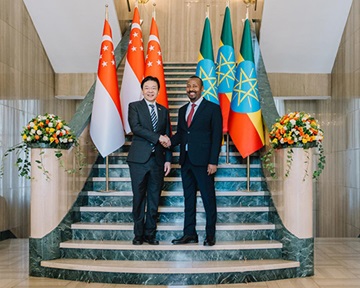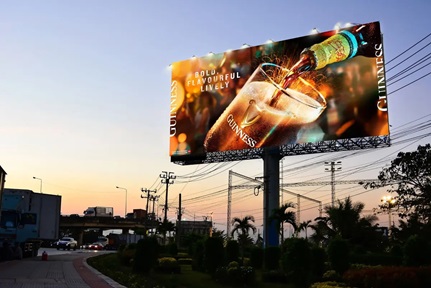Welcome to the ‘New Normal’ - Africa’s Start-up Ecosystem in Q1 2025
While slightly disappointing in absolute terms, Q1 numbers are in fact in line with both African and global trends
By Max Cuvellier Giacomelli

The year started on a promising note, with African start-ups raising nearly US$300 million in January. However, this momentum quickly dissipated, as February saw a steep decline to just US$119 million, and by March, the situation looked even bleaker, with only US$50 million raised. A lack of large deals, particularly those over US$10 million, further dampened expectations. Despite the disappointing figures of the second half of the quarter, Q1 2025 saw a total of US$460 million raised in start-up funding (excluding exits), only slightly below the US$486 million raised in Q1 2024 (-5% YoY), which however wasn’t a particularly strong quarter. All in all, Q1 2025 funding levels remained low compared to previous years. That said, there are signs of resilience. The number of start-ups raising at least US$1 million for instance remained consistent with the 2023-2024 average, with 52 start-ups securing such deals in Q1. This suggests that smaller investments are still happening, even as much larger funding rounds remain scarce.
Looking at the regional breakdown, 83% of the funding went to the “Big Four” markets (Kenya, Nigeria, South Africa, and Egypt), unsurprisingly. The first three each raised roughly US$100 million, while start-ups in Egypt secured US$61 million. Togo’s Gozem – with a US$30 million Series B round[i] - was a notable outlier, proving that smaller markets can still attract significant investments. Fintech was the dominant sector in Q1, attracting 46% of total funding, driven by companies like LemFi and Naked (see below). Energy followed at 18%, with Logistics and Transportation at 10%. The gender gap remains a concern: female CEOs raised just 2% of the total funding, largely due to a US$6m+ grant to South African biotech African Biologics.[ii] Excluding grants, female-led start-ups only captured 0.7% of funding. Male-only funding teams still dominate, securing nearly US$4 out of US$5 invested on the continent.
Despite the slower pace of funding, there were still notable deals in Q1 2025 that underscore the ongoing potential within Africa’s start-up ecosystem. The largest deal of the quarter in value was PowerGen Renewable Energy’s US$55m round[iii] with participation from PIDG, Danish IFU, EDFI, and the African Development Bank’s Sustainable Energy Fund for Africa (SEFA). At the border between VC and infrastructure financing, this deal highlights the ongoing importance of renewable energy on the continent and demonstrates that Africa remains an attractive destination for such investments.
The US$53m round in Nigerian fintech LemFi[iv] was a close second. Launched at the beginning of the pandemic, the start-up focuses on facilitating remittances for diasporas in the US and Europe and has reached one million active users and recorded over US$2 billion in transaction volume in 2023. There was participation from existing investors Left Lane Capital, Palm Drive Capital, and Y Combinator, as well as new investors including Endeavor Catalyst. This deal illustrates the ongoing interest from investors to back fintech ventures addressing real market needs. Naked – who secured a US$38m Series B in January[v] with participation from existing investors including Hollard, the IFC and German’s DEG - is also one those. The South African insurtech will use the funding to continue scaling its digital insurance platform.
This quarter however, I wanted to go beyond highlighting quarterly trends and top deals, and to put the Q1 funding numbers in a different perspective. Indeed, while the numbers seem a bit lackluster, they need to be considered within a broader context accounting for the inevitable monthly and quarterly data volatility. For example, after a dismal month of March ($50 million raised), at the time of writing this article in mid-April, Africa has already seen more funding announced than in March and February combined.
One useful way to analyse the data is to consider 12-month rolling periods. This approach smooths out the volatility and highlights longer-term trends. From this perspective, the funding ecosystem seems to have found stability. In fact, the minimum funding raised over any 12-month period since the end of the “funding winter” is now around US$2 billion – significantly higher than the pre-heatwave levels, which hovered around US$1.1 billion to US$1.5 billion annually –, and has been stable for over a year now. Even after the slowdown, Africa’s “new normal” is still 60% higher compared to pre-heatwave levels, which contrasts with the ‘doom and gloom’ narrative often associated with recent funding trends.

Despite the slowdown and relatively to global trends, Africa’s start-up ecosystem has weathered the storm better than many others. Indeed, looking at global start-up investment trends[vi], Africa’s experience has mirrored the global patterns: a sharp rise in investments, followed by a gradual decline. However, what stands out is that Africa experienced a more significant increase during the funding heatwave. While global investments peaked at a 2.6x increase compared to pre-heatwave levels, Africa’s funding jumped 4.3x during the same period. This relative outperformance shows that Africa benefitted more from the global boom than many realise.
In conclusion, Q1 2025’s funding numbers may appear underwhelming at first glance, but the bigger picture tells a story of resilience and stability. Africa’s start-up ecosystem is far from the boom years of 2021-2022, but it seems to have settled into a new normal, which is a lot more stable and sustainable than many may have expected. And when we compare Africa’s performance to the rest of the world, it becomes clear that Africa benefitted more from the global start-up boom and has weathered the slowdown better than many other regions.
For more, visit www.africathebigdeal.com
References








